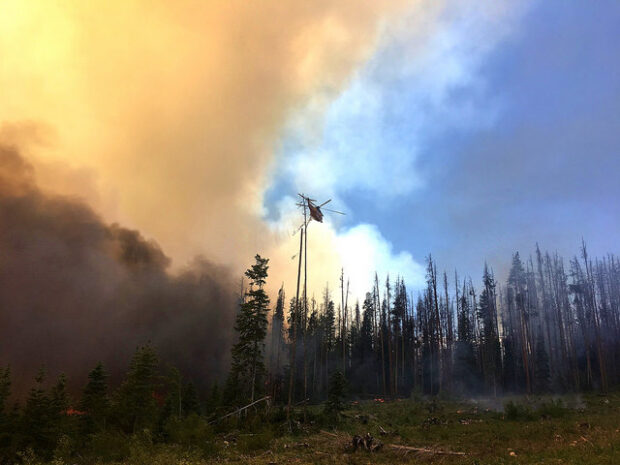A recent wildfire demonstration highlighted how mitigation can thwart damaging fires from reaching homes.
The live burn conducted in collaboration with the Insurance Institute for Business & Home Safety (IBHS), the California Department of Insurance (CDI) and Orange County Fire Authority (OCFA), displayed the effectiveness of research-based wildfire mitigation actions, including maintaining a noncombustible five-foot buffer around a home – Zone 0 – to help reduce its risk of ignition.
The live fire demonstration featured a side-by-side look at how fire behavior impacts mitigated versus unmitigated structures.
Embers are the leading cause of home ignitions during a wildfire.
“Where we see a beautiful bush or wood mulch, an ember sees fuel,” said IBHS CEO Roy Wright. “Homeowners spend hours selecting countertops, flooring and paint colors, yet may be unaware that the choices for ground cover and vegetation in the first five feet out from their home can be the difference in having a house to come home to after a wildfire or having to look somewhere else for shelter.”
A noncombustible Zone 0, along with roof and specific building features such as gutters and vents, are key areas of IBHS’s Wildfire Prepared Home program where California homeowners can earn a designation by taking a system of science-backed actions to reduce their home’s wildfire risk.
The five-foot buffer around a home is also critical to California Department of Insurance’s Safer from Wildfires, an approach to wildfire resilience that qualifies California homeowners for insurance discounts.
“Firefighters can’t do it alone – everyone has a part to play in making California safer from wildfires, including insurance companies,” said Insurance Commissioner Ricardo Lara. “California is the first state in the nation to require insurance companies to incorporate our new Safer from Wildfires framework into the price of insurance – so we reduce wildfire risk and incentivize people to harden their homes. If you do the work, you should get the reward, and today’s demonstration highlights the difference these actions make in reducing fire risk.”
During a wildfire, embers may collect in Zone 0, also known as the home ignition zone, and smolder, ultimately igniting and spreading to the home, IBHS said. Once a home ignites in a wildfire, it is almost always a total loss without firefighter intervention.
Homeowners are urged to get started now to create a non-combustible five-foot buffer around the home by removing combustible items and vegetation, replacing ground cover like wood or rubber mulch with materials such as river rocks or gravel, and replacing the first five feet of combustible fencing attached to the home, the agencies recommended.
Items on top of or underneath attached porches and decks should also be non-combustible and any deck four inches or lower to the ground should be enclosed with 1/8 inch or finer metal mesh. Keeping Zone 0 free of debris build up over time is critical, they added.
“As our Wildland Urban Interface grows in tandem with bigger, hotter, and faster-moving climate-driven wildfires, we aim to partner with stakeholders that are equally committed to innovation and prevention,” said OCFA Fire Chief Brian Fennessy.





















 Insurance Costs, Climate Concerns Factor Heavily in U.S. Home Buying Decisions
Insurance Costs, Climate Concerns Factor Heavily in U.S. Home Buying Decisions  Northern California Flooding This Weekend Caused by Heavy Rain, High Tides
Northern California Flooding This Weekend Caused by Heavy Rain, High Tides  NOAA Announces Latest AI-Driven Global Weather Models
NOAA Announces Latest AI-Driven Global Weather Models  Federal Aviation Notice Warned of Slackline Before Deadly Arizona Helicopter Crash
Federal Aviation Notice Warned of Slackline Before Deadly Arizona Helicopter Crash 